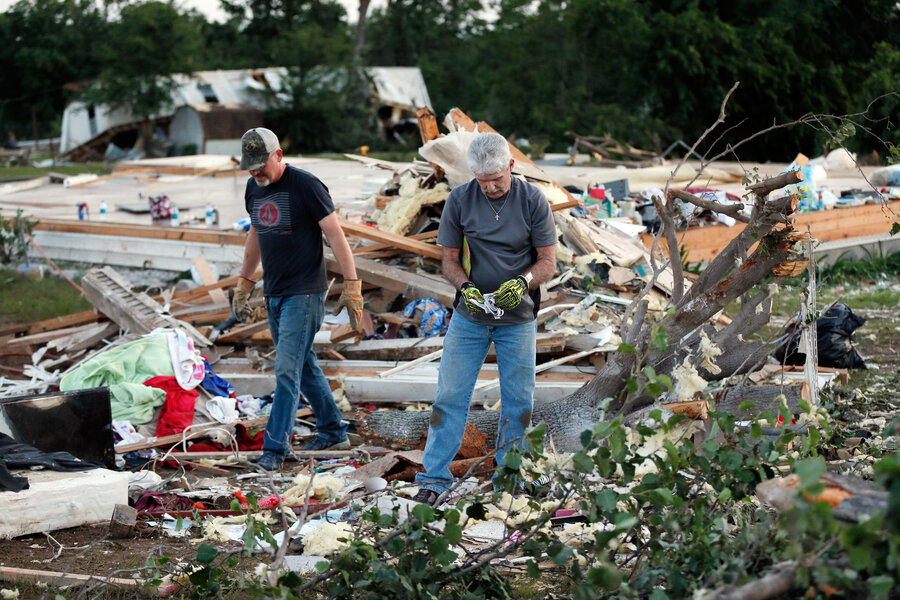Tornadoes batter Midwest: how to stay safe during twister season
Loading...
On Monday, weather conditions in the Great Plains worsened enough to prompt calls of a “tornado emergency” from forecasters.
Several tornadoes ravaged the American Midwest early this week as storms swept through the area. At least two people were killed in Oklahoma from the violent weather events. The tornados resulted in flipped cars and severe property damage.
Tornados can form under the right conditions at any time of the year – and in any part of the US. But for the American Midwest, and in particular the stretch of land from Texas to Nebraska known as Tornado Alley, April to June mark the heavy tornado season.
To stay safe, experts are offering advice on how approach the tornado season.
“It's all about having a plan, and start planning early if possible,” the Associated Press reports.
The No. 1 priority in the event of a tornado is to put as much distance as possible between you and the weather outside and the more walls in between the better. Flying debris is the threat. A clear path should be maintained to a secure room on the lowest floor of a house – a closet or basement can work well.
A weather radio will update with alerts from local National Weather Service offices. Media that will not automatically cut in with an emergency update in your region should be avoided. Following local offices of the National Weather Service and the Federal Emergency Management Agency on Twitter and other social media platforms can also help people stay updated about changes in the weather.
If you receive news of bad weather while in a car, flee if possible, but be mindful of potentially thousands of others doing the same. If it is not possible to get away, drivers are advised to park their vehicles in a point of low elevation, with caution in areas prone to flash flooding (such as under a bridge).
Only five years ago, the nation had its worst tornado conditions on April 27-28 when 175 tornados formed causing severe damage in Alabama, Georgia, Mississippi, Tennessee, and Virginia, resulting in the deaths of 316 people. The 2011 events surpassed the damage caused by a string of 127 tornadoes primarily targeting the Ohio Valley in April 3-4 of 1972, which killed 310 people.
But advances in climate science and communications are offering more warning than people have had in the past.
Statewide drills are also being implemented to help citizens prepare in the event of a sudden tornado. Several states held preparedness test services in March, offering residents the chance to test their own plans before they are needed. As the Virginia Department of Emergency Management reminds residents:
“Tornadoes can happen anytime, anywhere, with little or no warning. Knowing what to do when seconds count can save lives.”
This report includes material from The Associated Press.








